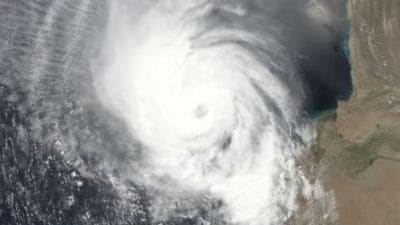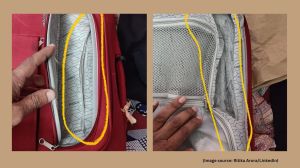Anonna Dutt is a Principal Correspondent who writes primarily on health at the Indian Express. She reports on myriad topics ranging from the growing burden of non-communicable diseases such as diabetes and hypertension to the problems with pervasive infectious conditions. She reported on the government’s management of the Covid-19 pandemic and closely followed the vaccination programme. Her stories have resulted in the city government investing in high-end tests for the poor and acknowledging errors in their official reports. Dutt also takes a keen interest in the country’s space programme and has written on key missions like Chandrayaan 2 and 3, Aditya L1, and Gaganyaan. She was among the first batch of eleven media fellows with RBM Partnership to End Malaria. She was also selected to participate in the short-term programme on early childhood reporting at Columbia University’s Dart Centre. Dutt has a Bachelor’s Degree from the Symbiosis Institute of Media and Communication, Pune and a PG Diploma from the Asian College of Journalism, Chennai. She started her reporting career with the Hindustan Times. When not at work, she tries to appease the Duolingo owl with her French skills and sometimes takes to the dance floor. ... Read More
Here’s what you should do if you’re in a road accident
Cyrus Mistry has been killed in a car accident in Maharashtra. Who is at the highest risk of getting into and sustaining severe injuries? What are the leading causes for accidents? What are the common and most fatal injuries? What should one do if they are in an accident?
 Wreckage of the Mercedes car in which businessman and former Tata Sons Chairman Cyrus Mistry was travelling when it met with an accident in Palghar, Sunday, Sept. 4, 2022. Mistry, 54, died in the accident. (PTI Photo)
Wreckage of the Mercedes car in which businessman and former Tata Sons Chairman Cyrus Mistry was travelling when it met with an accident in Palghar, Sunday, Sept. 4, 2022. Mistry, 54, died in the accident. (PTI Photo) India sees about 4.4 lakh road traffic accidents every year, with over a quarter of them ending in death, according to data from the National Crime Record Bureau. After businessman and former Tata Group chairman Cyrus Mistry died in a car crash in Maharashtra’s Palghar district on Sunday (September 4), The Indian Express takes a look at what happens when a person gets into a road accident and what can be done to prevent death.
Who are at the highest risks of getting into and sustaining severe injuries from road accidents?
India sees around 16.6 deaths per 100,000 population due to road traffic accidents, with it being the leading cause of emergency department visits. Accidents accounted for 24% of the total visits in a day, according a report on emergency care in India by the Jai Prakash Narayan Apex Trauma Centre associated with the All India Institute of Medical Sciences.
Pedestrians and those riding two-wheelers or three-wheelers account for the highest proportion of road traffic accident deaths, cumulatively making up 40%, according to the 2019 WHO Global Status Report on Road Safety report. Those in cars account for 12% of the road traffic accident deaths, as per the report.
“Cars have many safety features – they are designed to not collapse on collision or under pressure, they have seat belts, they have airbags. On the other hand, the only protection available to those on two-wheelers is a helmet. The pedestrians have no safety net at all. This is the reason most of the fatal road accidents are in those on two-wheelers or pedestrians,” said Dr Rajesh Malhotra, who head the AIIMS trauma centre.
Why do the accidents happen?
Alcohol consumption, over-speeding, and not following traffic rules are the most common causes of road traffic accidents, according to Dr Priyadarshini Pal Singh, head of the emergency depart at Indraprastha Apollo hospital.
She said, “Whether we want to accept it or not, there are a significant number of accident victims who come to the hospital smelling of alcohol. Drinking slows down reflexes and can result in accidents. Rash driving and over-speeding, especially by young riders and drivers is another reason. Other than that, people not following traffic rules such as jumping signals or overtaking from the wrong side also results in accidents.”
Dr Malhotra adds underage driving, poor eye-sight of drivers, and the condition of roads to the list.
Dr Sumit Ray, head of the critical care department at Holy Family hospital, also said most of the accidents are reported at late night or early mornings. “This could be because people do not expect any traffic at this hour and hence are not as alert,” he said.
What are the most common and the most fatal injuries?
Head injuries, especially in cases where the person is not wearing a helmet or seat belt, are one of the commonest as well as fatal injuries, according to experts. Other than that, injuries to the chest and abdomen, and fractures of the arms, legs and pelvis are common in road accident victims.
“There is a trimodal pattern of deaths – one, those who die on the spot; two, early deaths in patients who are either lying at the site of the accident or brought late to the hospitals; and three, a person who dies after a few days due to complications of injuries. A severe head injury, liver injury with uncontrolled bleeding, and pelvic injury with uncontrolled bleeding are likely to lead to immediate death. Another cause of death in accident victims is the ribs fracturing due to impact on chest and puncturing the lungs, this can still give the doctors some time to treat,” said Dr Ray.
He added, “The second category is where we can make the most difference by ensure that they reach hospital fast and receive proper care.”
In fact, around 40% of those in serious road accidents with polytrauma aren’t salvageable at all, according to Dr Pal Singh. She said, “Internal injuries in the chest, abdomen, and pelvis are the most dangerous because there is a lot of space in these regions allowing for a lot of blood loss without any external bleeding. As for external cuts, they most likely impact the veins and not the deep-seated arteries, and don’t put the person at as high a risk of bleeding out as the internal injuries that mainly affect the arteries (which take oxygenated blood to the organs).”
 How a rear seat passenger not wearing a seat belt may be impacted
How a rear seat passenger not wearing a seat belt may be impacted
What should you do if you are in an accident?
The first thing, all the three experts say, is to call for help.
“Call for help, take the person to the hospital as soon as possible. If you are carrying the person yourself in a car or autorickshaw, ensure that their head and neck remain as still and as straight as possible. On route to the hospital, the person can be checked for bleeding and a cloth may be tied and pressure applied to stop it. Otherwise, I would advise people against giving CPR etc, because most people aren’t trained to do so and may cause more damage,” said Dr Pal Singh.
Dr Ray says an accident victim, especially an unconscious one, should be moved only if they are in the harm’s way; if they are at risk of another accident as they are in the middle of the road. “Wait for the ambulance and trained personnel to help the victim. If the person has to be moved, ensure that you support their neck,” he said.
Both said that the people must be taken to the hospital not in the “golden hour” after the accident but as soon as possible because even minutes matter.
Other than that, both said if it was a high-speed collision or if other persons in the vehicle have sustained severe injuries, everyone should go to the hospital even if they do not have any apparent injuries.
What can the people, government do to reduce the number of traffic accidents and the deaths from it?
Dr Malhotra says there are seven ways in which accidents can be prevented, and if not, the number of deaths can be reduced.
“Although most accidents happen because of human error, and it cannot be completely prevented, but there are ways to reduce the number of accidents and deaths. First of all, there should be a strict penalty and checks for underage driving. Second, similar penalties should be there for driving under the influence. Third, and this is mainly for the big commercial vehicles, the health checkup of the drivers should be done more frequently because there are accidents due to poor eye sight,” said Dr Malhotra.
The fourth intervention, he said, has to be improving the quality of roads – unmarked speed breakers or potholes can send those on two-wheelers flying off it.
Fifth, he suggests there should be a way of tracking those travelling on highways. “If a vehicle has crossed one toll plaza and hasn’t taken any exit since, the authorities should be immediately alerted. This will help in reducing the response time of the rescuers,” he said.
Sixth, he said is implementation of the good Samaritan law. “It will help if people know they can help others without getting into the legalese. We have seen an increase in the number of people bringing in accident victims since. If the law also promises lenient punishment for those who meet with an accident but help, it can increase survival,” said Dr Malhotra.
Lastly, he said every school, college, workplace – especially factories – should train everyone on basic first aid.
The AIIMS report, which was submitted to the NITI Aayog, also suggests training emergency technicians better and integrate the fragmented and sometime two overlapping services.




- 0115 hours ago
- 0215 hours ago
- 0315 hours ago
- 0415 hours ago
- 0516 hours ago



































